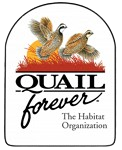June Newsletter
Overview
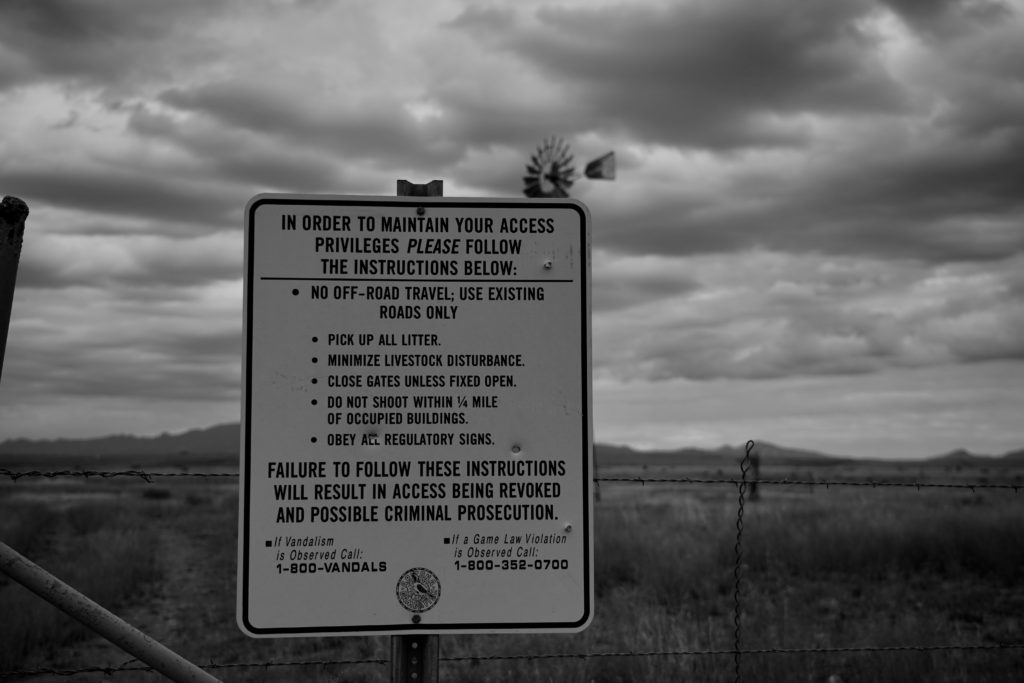
O
We hope all our members are weathering COVID 19 in good health and spirits. Patience and understanding will help us all get through this.
We have set a schedule for next season but it is TBD. As many of our members are in a higher risk category we will be cautious with any event that brings folks together. There is a reasonable possibility of cancelling all group activities. We will seek input from members and make a decision by the end of summer. If we cancel indoor group get togethers, we will look for your ideas to get folks together safely outside.
We are seeing new gambels chicks although prime time is a week or more away. All indications promise better desert quail numbers this coming season.
North American Model of Wildlife Conservation:
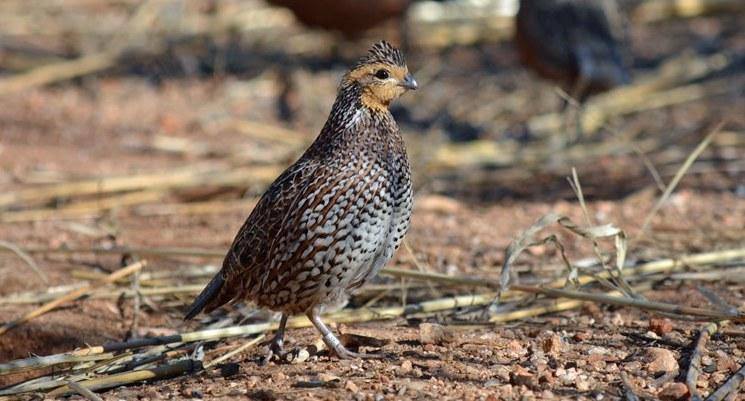
In our nation’s early years, there were few laws protecting fish and wildlife and our wildlife resources took a heavy toll. Market hunters took fish and wildlife at will while habitat disappeared under plow and roads, resulting in devastating reductions in wildlife populations. Some species, like the passenger pigeon, were taken to the point of no return; others such as bison, white-tailed deer and wild turkeys, were pushed to the edge extinction. As the tides turned for conservation, important laws were passed, including the Migratory Bird Treaty Act of 1918, the Migratory Bird Hunting and Conservation Stamp Act of 1934, the Federal Aid in Wildlife Restoration Act of 1937, and the Federal Aid in Sport Fish Restoration Act of 1950. Collectively, these acts laid the foundation for what inspired the North American Model of Wildlife Conservation. Across North America, hunting was a largely unregulated activity for individuals and commercial entities until the 1800’s, when citizens began to ask whether wildlife populations could continue at healthy levels without checks on hunting. The legal framework that has since developed grew out of a set of principles now known as the North American Model of Wildlife Conservation. Seven features make the North American model distinct:
- Wildlife is a public resource. In the Unites States, wildlife is considered a public resource, independent of the land or water where wildlife may live. Government at various levels have a role in managing that resource on behalf of all citizens and to ensure the long-term sustainability of wildlife populations.
- Markets for game are eliminated Before wildlife protection laws were enacted, commercial operations decimated populations of many species. Making it illegal to buy and sell meat and parts of game and nongame species removed a huge threat to the survival of those species. A market in furbearers continues as a highly regulated activity, often to manage invasive wildlife.
- Allocation of wildlife by law. Wildlife is a public resource managed by government. As a result, access to wildlife for hunting is through legal mechanisms such as set hunting seasons, bag limits, license requirements, etc.
- Wildlife can only be killed for a legitimate purpose. Wildlife is a shared resource that must not be wasted. The law prohibits killing wildlife for frivolous reasons.
- Wildlife species are considered an international resource. Some species, such as migratory birds, cross national boundaries. Treaties such as the Migratory Bird Treaty and CITES recognize a shared responsibility to manage these species across national boundaries.
- Science is the proper tool for discharge of wildlife policy. In order to manage wildlife as a shared resource fairly, objectively, and knowledgeably, decisions must be based on sound science such as annual waterfowl population surveys and the work of professional wildlife biologists.
- The democracy of hunting. In keeping with democratic principles, government allocates access to wildlife without regard for wealth, prestige, or land ownership.
Arizona Game and Fish and most other similar state agencies do not receive general state funding to manage and protect wildlife. They are funded by sales of hunting and fishing licenses and the federal tax (Pittman Robertson Act) on firearms and ammunition. Without funds provided by hunters and fisherman our North American Model is at risk of collapse. Do you want to see wildlife management driven by politics vs science? We need to get and keep more hunters and fishermen.
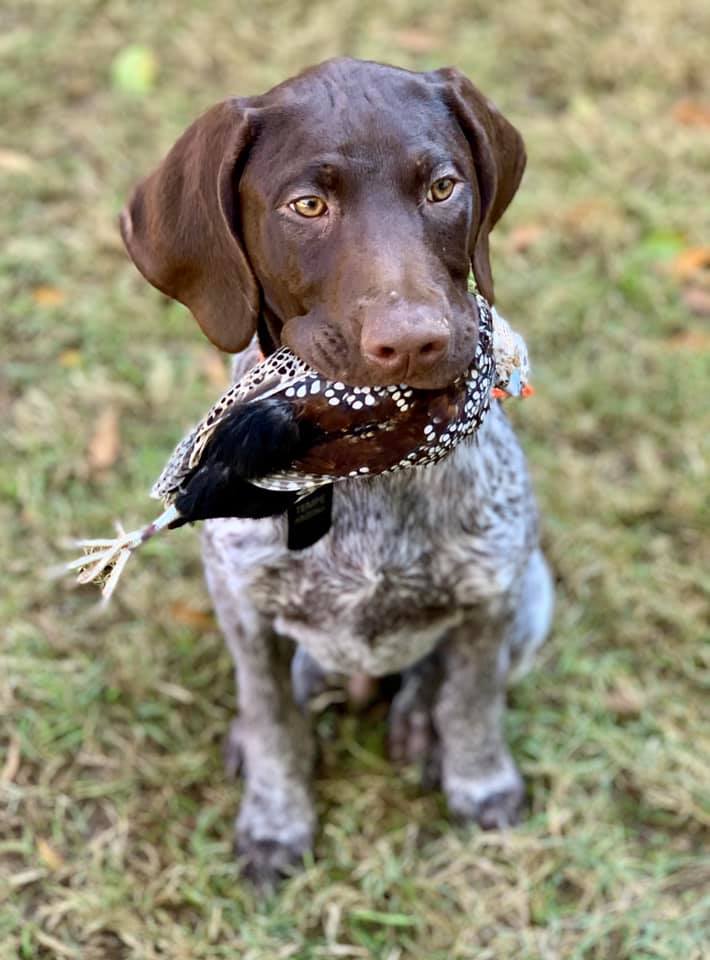
GSP Pups:GSP pups for sale. 3-M and 3-F born 5-19-20 Mother and father are both hunting dogs from Tucson. Contact Jim Littlejohn jsl1964@gmail.com or 520.490.1374
6-Dog Trailer for Sale:2006 Crow-River custom dog trailer with stainless steel linings. Contact Dr Mark at 928.606.0604.
AZ Sportsman for Wildlife Conservation (AZSFWC)
AZ Sportsman for Wildlife Conservation (AZSFWC)
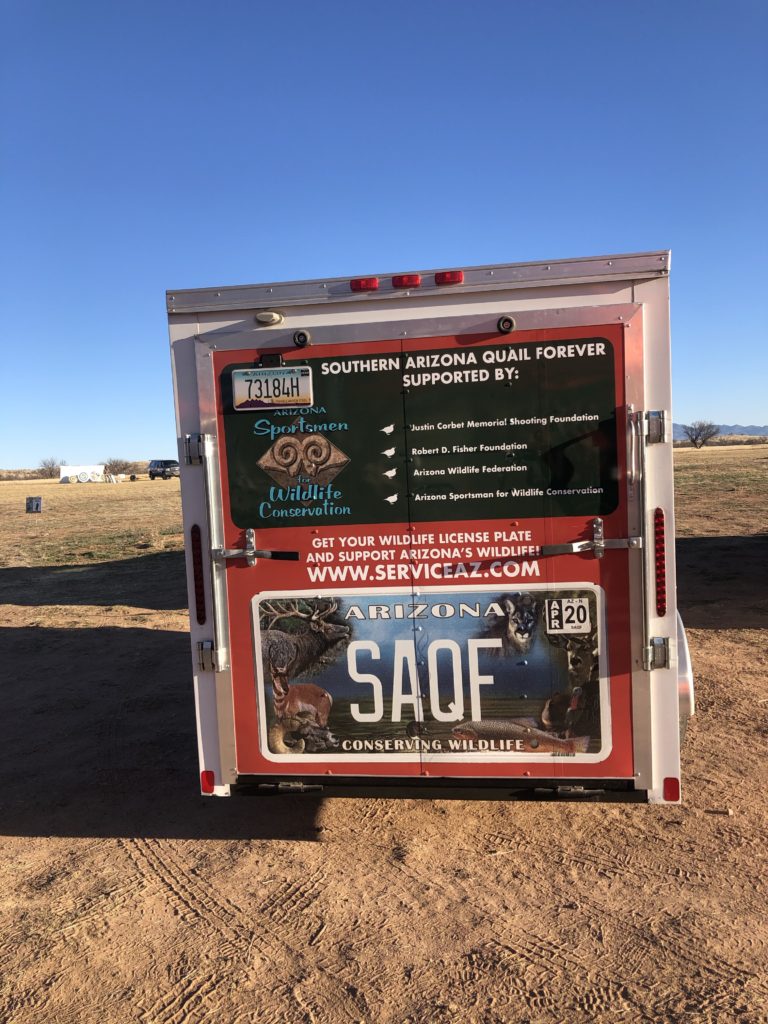
:SAQF is part of AZSFWC. You can sign up for their enews at http://azsfwc.org. This allows us to better coordinate with other wildlife groups and better communicate with AZ G&F leadership. We are part of over 10,000 AZ sportsman represented by this organization.
Please consider purchasing a AZSFWC license plate to support wildlife when you renew your current AZ plate through Service Arizona. The fee for this license supports the conservation grants provided by AZSFWC. Our Family Day has received AZSFWC grant support the last two years.
AZSFWC is raffling a new Ford Raptor truck to help pay overhead in place of raffles and auctions at their summit. Info on the raffle and tickets are available at http://azsfwc.org.
C
Chapter Website and Facebook:

If you see an error or have a recommendation for improvement, please let us know. We are always looking for pictures, stories or articles to add. We are working to add instagram to our social media offerings. If you see something that would be worthwhile to cross post, please send it to Dave Brown (browndave27@gmail.com) or Kerry Newberry (newberry.kerry@gmail.com). We hope all enjoyed the great dog pictures in our Facebook dog photo contest.
Future dates:

- 1 Jul 2020 New Board in Place
- 7/8 Aug 2020 Western Region Meeting Missoula, MT
- 16 Oct 2020 Desert Quail Opens
- 19 Nov 2020 Chapter Meeting Sahuarita
- 4 Dec 2020 Mearns Opens
- 6 Dec 2020 QuailFest Sonoita
- 10 Dec 2020 Chapter Meeting Sonoita
- 21 Jan 2021 Chapter Meeting Sonoita
- 30 Jan 2021 SAQF Banquet
- 7 Feb 2021 Quail Closes
- 18 Feb 2021 Chapter Meeting Sahuarita
- 27/28 Feb 2021 Family Day Empire Ranch
